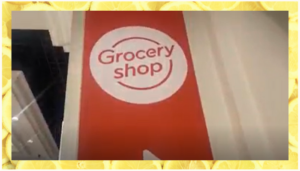Back to School Is A Needed Reminder About Product Matching
Reading Time: 10 Minutes
Do you remember sitting in that class? Maybe it was English. Or calculus. Or biology. The first few weeks were fine, but then you started to wonder, “How am I ever going to use this?”
Kids across the world are starting school this week wondering the same thing because there is a disconnect between the information they are given and the outcome they are trying to reach.
What is probably not surprising is that many retailers and CPG manufacturers are sitting in their offices looking at data and wondering the same thing.
“How am I ever going to use this?”
When it comes to pricing, promotion, and assortment data, too many companies are collecting data without the ability to apply it to meet the needs of their shoppers and drive revenue for their organizations.
Unfortunately, data providers both internal and 3rd party, point to overarching trends to justify their value.
“Back to school shopping is expected to see higher demand despite interruptions to supply chain.”
“Searches for sandwich bags, peanut butter and No. 2 pencils see significant gains in July and August.”
This seems extremely similar to the Geometry teacher that declares, “tan = sin/cos”, or the history teacher that states, “history repeats itself so we must learn from the past.” When it comes to improving the competitiveness and effectiveness of your business truth does not necessarily equal value.
Product Matching Makes Sure 1+1=2
In school there were teachers who left it up to you to figure out why something matters, others that told you why and a few that gave you the tools to make information relevant to you. For retailers to maximize the relevancy of their omni-channel data, there needs to be a reliable mix of all 3. In other words:
- Bring in the right information from the right places at scale.
- Accurately align the data to the categories and products that matter most to your business.
- Make it easy to see pricing, assortment and promotion insights that can impact your decision making.
Unfortunately, these keys to bringing relevant insights to your organization are dependent on each other.
This is why product matching should be a top priority for retailers wanting to harness competitive data to for pricing and assortment decisions.
Just like incorrect matching in school leaves you struggling to learn, incorrect or incomplete product matching will make it impossible to make decisions.
Where Retailers Struggle with Product Matching
Sometimes product matching is easy.
A box of Wheat Thins is a box of Wheat Thins at every retailer.
- Similar look.
- Similar description.
- Similar categorization.
- Same UPC.
However, the ease of product matching lulls retailers into thinking all product matching is equal.
Until:
- A retailer does not list the UPC of a product online.
- Similar products share the same UPC.
- Product details have minor differences (Canned white tuna in water vs Canned dolphin safe white tuna in spring water).
- There are not exact matches as in private label or categories like fresh, deli, bakery, seafood, etc.
- Prices or quantity measurements are different (price/piece vs price/pound)
When retailers face these challenges, they often limit the scope of their analysis, accept any information as good enough or simply focus on other areas where they think they can make a bigger difference.
Compromising Product Matching Quality = Compromising Profitability
While these product matching exceptions may seem trivial, there are significant consequences to tactical decision making and higher-level pricing and assortment strategy.
The most obvious of these is that retailer pay thousands of dollars a year for sophisticated pricing optimization engines yet do not invest equally in making sure that they data feeding those engines is accurate.
What are the repercussions of accepting the garbage in/garbage out thinking?
Imagine your pricing oranges.
You product matching shows oranges at $3.66 at your closest competitors.
However, the reality is for a 4 pack of oranges that product matching has misaligned.
If you change your price to $3.66/pound how many oranges will you be selling?
This may be an extreme example, but pricing engines cannot differentiate between mismatched products.
For every misaligned product there is a pricing and assortment impact that affects revenue.
The Risk of Being Wrong Is Growing
My sophomore daughter observed at the end of the first day of school, “Every year school puts more pressure on me to know what I am going to do for the rest of my life, but no matter what I say they teach me the same thing.”
Today, competitive strategy goes well beyond understanding what the 5 stores in your area are selling, at what prices, and using what promotions. The simple increase in purchasing and delivery channels that are providing more options for our shoppers [thank you Amazon, Instacart, Doordash, curbside pickup] and are dictating that retailers know more and can change more quickly.
As a result, the “good enough” data of the past that provided enough directional insights for you to make business impacting decisions now perpetuates the very pricing, promotion and assortment gaps that it is meant to prevent.
We are too often left asking, “How am I going to use this?”
For retailers to adjust to the expectations of this faster moving, more competitive future, they can’t do so with the same information guiding their decisions. Instead you must invest in have accurate, relevant, timely and actionable data that aligns with the business decisions and outcomes that you are prioritizing.
The Latest Insights – Straight to Your Inbox
Sign up for the Bungee Tech mailing list for actionable strategies, upcoming events, industry trends, and company news.














